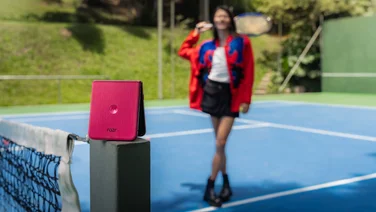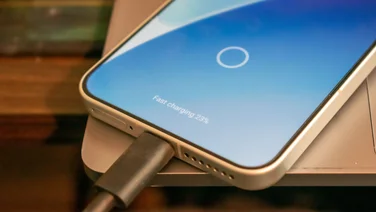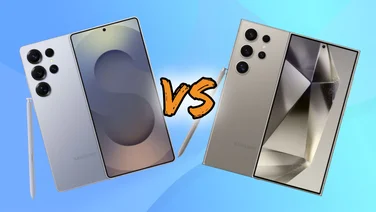To help us provide you with free impartial advice, we may earn a commission if you buy through links on our site. Learn more


























- Bright screen
- Excellent build quality
- Dedicated wide-angle lens
- Average battery life
- Camera AI mode needs work
We were initially very impressed by last year’s LG G6, not least because it was the first high-end phone to feature an 18:9 screen. However, it quickly became somewhat irrelevant in the flagship arms race. Why? The Korean manufacturer made the mistake of sticking with the Snapdragon 821 chip, where all its rivals equipped their flagships with the faster, more power efficient Snapdragon 835.
READ NEXT: Best smartphones 2018
This time around, LG has taken a more conservative approach, releasing the LG G7 after many of its rivals and has included the very best processor it possibly can do in the Snapdragon 845. The question is, does that make the G7 worth buying?
LG G7 ThinQ review: What you need to know
The LG G7 is the Korean manufacturer’s latest flagship phone and its first to follow the latest smartphone trend of featuring a “notch” in the display. Its screen measures 6.1in across the diagonal and delivers a near-4K resolution of 3,120 x 1,440.


























All the work going on inside the LG G7 is powered by by a top-end Snapdragon 845 processor, which is backed up by 4GB of RAM and 64GB of storage. You get twin 16-megapixel rear cameras with f/1.6 and f/1.9 apertures, both of which benefit from optical image stabilisation. Unlike other dual camera setups, the G7’s secondary lens primarily serves the purpose of capturing wide-angle shots.
As with its predecessor, the LG G7 is water and dust resistant to the IP68 standard, which means it can be submerged under 1.5m of water for up to half an hour.
LG G7 ThinQ review: Price and competition

LG’s latest flagship will set you back £599, which represents a considerable saving compared with the starting prices of the Samsung Galaxy S9 (£739), Sony Xperia XZ2 (£699) and HTC U12+ (£699). However, as with every other premium phone this year, the LG G7’s main competition comes from the outstanding OnePlus 6, which has most of the features of a flagship device and costs a mere £479. The next best phone under £500 is arguably the Honor 10 (£399), which will save you another £80 over the OnePlus 6 but comes up short in terms of battery life.
Best LG G7 contract and SIM-free deals
LG G7 ThinQ review: Design and key features
The LG G7 is an attractive, albeit slightly generic looking phone. Indeed, without its logo you’d probably struggle to distinguish it from its main rivals, including the OnePlus 6. With a volume rocker on the left and the power/wake button on the right side, its only distinguishing feature is the inconspicuous button situated directly below the volume buttons, which can be used to call Google Assistant or Google Lens into action with a single- or double-tap.
Elsewhere, everything is standard fare. On the bottom edge of the device, you’ll find a 3.5mm headphone jack, a single speaker grille and a USB Type-C port for charging and data transfer. And, as with many other all-screen phones in 2018, the fingerprint reader is located on the rear of the phone, directly below the dual-camera.
Finally, the LG G7 also has one of those tall, thin aspect ratio displays, which means you get plenty of screen space to play around with (6.1in, when measured diagonally) yet the phone is still narrow enough that it can be used in one hand. The bottom and side bezels are slightly wider than those on the OnePlus 6, but the G7 is still what you might refer to as an “all-screen” phone and there’s no doubt it’s a premium device.


























In terms of robustness, the LG G7 has a Gorilla Glass 5 front and back to guard against everyday scratches and scuffs and it’s also IP68 dust- and water-resistance certified and Mil-spec tested, which sets it apart from the OnePlus 6 and its “everyday” water resistance. However, although, the glass back looks and feels great, it does attract fingerprints pretty much as soon as you can wipe them away.
LG G7 ThinQ review: Display
LG has always made phones with great screens and the LG G7 is no different, at least as far as its specs are concerned. Its IPS LCD panel has a near-4K resolution of 3,120 x 1,440 and LG claims this is 30% more power-efficient than that found in the G6. The panel is also 10-bit, meaning it’s fully HDR compliant.
We found the screen reasonably colour accurate, covering 95.7% of the DCI-P3 colour space. But, if the default colour mode isn’t to your tastes, there are plenty of options to choose from, including Eco, Cinema, Sports, Game and finally Expert, which lets you tweak the colour temperature and RGB levels manually.


























Where the display really comes into its own, however, is brightness. Indeed, it’s perhaps the brightest screen we’ve ever seen on a smartphone, clocking 951cd/m2 when measured with with our X-Rite i1 Display Pro colorimeter. Is this overkill? Probably, but I can imagine it coming in handy on a sunny day on the ski slopes.
LG G7 ThinQ review: Performance and battery life
Thankfully, there’s been no repeat of the mistakes LG made with the G6 last year, where it used a slower chip than the rest of the flagship competition. The LG G7 is powered by the super-fast Qualcomm Snapdragon 845 and backed by 4GB of RAM and 64GB of storage, making it perfectly capable of coping with the most intensive of tasks.
This chip is the same one that features in the OnePlus 6, Sony Xperia XZ2 and HTC U12+. As you’d expect, then, the LG G7 posted GeekBench 4 benchmarks scores more or less on par with all these devices. My only criticism is that, when unlocking the phone with its facial-recognition feature, the G7 uses an animation that makes it feel slower than the OnePlus 5T I normally use.

In terms of graphics performance, the LG G7 lags some way behind its main rivals (thanks to that high-resolution screen) but it still produced a highly respectable onscreen score of 41fps in the Manhattan 3 benchmark test, outpunching the HTC U12+ in the process.

As for battery life the LG G7 is similarly middling, lasting 13hrs 37mins in our video rundown test, placing it an hour behind the Samsung Galaxy S9, four hours behind the OnePlus 6, but nearly two hours ahead of the HTC U12+.

LG G7 ThinQ review: Camera
The LG G7’s camera isn’t bad, either. It comes with twin 16-megapixel rear cameras, the main one with an aperture of f/1.6 and the secondary camera with an aperture of f/1.9. Although the secondary camera helps to produce bokeh-effect portraits (like many other dual camera setups) its main role is as a wide-angle lens, thanks to its 122-degree field of view.

^ A wide-angle landscape shot taken with HDR enabled
Shooting outdoors, the LG G7 achieved excellent results both with the wide-angle and regular 77-degree view lenses. Indeed, it was almost impossible to split from the excellent OnePlus 6 in terms of image quality; we had to zoom in quite close on our test images to distinguish between the two and only slight over-compression on the LG G7 shots marks it out against its rival.
The camera’s HDR mode is subtle to the point that it’s practically redundant but one interesting feature the G7 does have is an AI mode that recognises what you’re shooting and makes adjustments to the camera settings accordingly. When this feature is enabled, words appear on screen, floating above different elements and, after a moment, the camera chooses a theme and appropriate configuration. In reality, the feature works pretty well but it was far from perfect and you’ll often see words totally unrelated to what’s shown in the viewfinder floating across the screen.
And there’s also a special low-light mode that uses four-to-one pixel binning to capture scenes in dark environments down to a single lux. This isn’t all that effective, producing over-processed, rather unnatural-looking images but that’s no great loss since the camera is actually pretty good in low light conditions without the mode enabled.

^The LG G7 performs well in low-light conditions
It’s not as good as the OnePlus 6 in this regard but it’s a close-run thing and, again, you have to look pretty close to identify its deficiencies: namely, slight over-saturation and over-keen compression.
Last, but by no means least, the LG G7’s video capture is very solid, too. It can deliver 4K footage at up to 30fps, and you can record in HDR10, too.
LG G7 ThinQ review: Verdict
The LG G7 is a very solid phone and offers all the features you could ever want from a flagship. You’d think it would be a shoo-in for an award when you consider that it substantially undercuts many of its rivals in price but, unfortunately, there’s one problem: the OnePlus 6.
With OnePlus’ latest “flagship killer” costing only £479, it’s difficult to wholeheartedly recommend the LG G7 until it comes down in price in a bit, which it inevitably will do – you only need to look at the pattern with LG’s previous flagships, including last year’s LG G6, which now costs only £330. If you buy the LG G7 now, you’ll likely be very happy with it, but if value is what you’re looking for, then you’re better off waiting a bit.







